I. The Sui and Tang Empires, 581-755
A. Sui Empire
1. Reunification of China--After the fall of the Han Dynasty, China was fragmeneted for several centuries. It was reunified under the Sui dynasty, a father and son ruling duo who held power from 581 until Turks from Inner Asia defeated the son in 615.
2. Sui rulers--called their new capital Chang'an in honor of the old capital in the Wei River Valley. Though northern China constituted the Sui heartland, population centered along the Yangzi River in the south and pointed the way for future Chinese expansion. To facilitate communication and trade with the south the Sui built the 1,100 mile long Grand Canal
3. Sui military ambitions--extended to Korea and Vietnam, as well as Inner Asia, and required high levels of organization and the mustering or resources--manpower, livestock, wood, iron, and food supplies. The same was true of their massive public works projects. These burdens proved to be more than the Sui could sustain. Over-extension compounded the political dilemma stemming from the military defeat and subsequent assassination of the second Sui emperor. These circumstances opened the way for another strong leader to establish a new state.
4. In 618 the powerful Li family took advantage of the Sui disorder to carve out an empire of similar scale and ambition. They adopted the dynastic name Tang. The brilliant emperor Li Shimin extended his power primarily westward into Inner Asia. Though he and succeeding rulers of the Tang Empire retained many Sui governing practices, they avoided over-centralization by allowing local nobles, gentry, officials, and religious establishments to exercise significant amounts of power.
B. Buddhism and the Tang Empire--the Tang rulers followed Inner Asian precedents in their political use of Buddhism. State cults based on Buddhism had flourished in Inner Asia and North China since the fall of the Han dynasty. Some interpretations of Buddhist doctrines accorded kings and emperors the spiritual function of welding humankind into a harmonious Buddhist society. Protecting spirits were to help the rulers govern and protect the people from harm.
1. Mahayana Sect--Mahayana Buddhism predominated in the region, and fostered a faith in enlightened beings--bodhisattvas--who postponed nirvana to help others achieve enlightenment. This permitted the absorption of local gods and goddesses into Mahayana sainthood and made conversion of local peoples more attractive to them. Mahayana also encouraged translating Buddhist scripture into local languages, and it accepted religious practices not based on written texts.
2. Inter-regional contacts--as the Tang Empire expanded westward, contacts with western Asia and India increased, as did the complexity of the Buddhist influence throughout China. Chang'an became the center of a continent-wide system of communication and trade.
C. To Chang'an by Land and Sea
1. Tributary system--a type of political relationship dating from Han time by which independent countries acknowledged the Chinese emperor's supremacy by sending representatives bearing gifts. While the "inferior" countries may have seen this as a way to facilitate trade with China, the Chinese saw it as a political relationship/
C. Upheavals and Repression, 750-879
1. Opposition to Buddhism--the later years of the Tang dynasty witnessed increased conflict with Tibetans and Uighurs; one result of this was a backlash among the Chinese against "foreigners," which, to Confucians, meant all Buddhists
2. Wu Zhao--Buddhism was also attacked for encouraging women to become involved in politics. One, Wu Zhao, declared herself empress by claiming to be a bodhisattva. She was not deposed until 705, when she was more than eighty years old.
3. Closing the monasteries--because Buddhist monks and nuns renounced earthly treasures, and live in poverty, they were exempt from taxation--although the monasteries where they lived tended to collect great riches. This, coupled with the fact that these monks and nuns also practiced celibacy, made them seem threatening to Confucians. By 840, the government moved to crush these monasteris, and within 5 years 4,600 temples had been destroyed, and an enormous amount of land and 150,000 workers returned to the tax rolls.
D. The End of the Tang Empire, 879-907
1. An Lushan Rebellion--The defeat of the Chinese army at the Battle of Talas River in 751, which halted Chinese expansion in Western Asia, also led to army demoralization and underfunding. A disgruntled general by the name of An Lushan led his soldiers in a rebellion against the emperor, resulting in his fleeing from the capital. The rebellion lasted eight years, and was only put down by provincial military governors--which further eroded the power of the emperor.
2. Further unrest--a disgruntled member of the gentry led another rebellion, which peasants and other poor farmers joined because it offered some protection from local bosses and landlords. Hatred of foreigners proved an outlet for this stress, and thousands of the foreigners were murdered on Canton and Beijing.
II. The Emergence of East Asia, to 1200
A. Emergence of Three New States--formed in the vaccuum created by the disintegration of the Tang Empire.
1. Liao Empire--established by the Khitan people, pastoral nomads related to the Mongols living on the northwest frontier. Centered their government in cities, but the emperor preferred life in nomad encampments.
2. Tanggut Empire (1038-1227)--of the Minyak people, who were related to the Tibetans on the Inner Asian frontier in northwestern China
3. Song Empire--Chinese-speaking, located in central China beginning around 960.
B. The Liao and Jin Challenge
1. Khitan People--extended from Siberia to Inner Asia. Liao rulers prided themselves on their pastoral traditions as horse and cattle herders, and made no attempt to impose a single elite culture.
2. Conquest of the Song--the Liao used their skill on horseback and as archers along with the technology of seize engines that they had learned from people in western Asia to defeat the Song, and forced them to send tribute in the form of gold and other valuable metals, and silk.
3. Jin Empire--after a century of paying tribute, the Song allied with the Jurchen people. The Jurchens toppled the Liao, burning their capital in Mongolia, and proclaimed their own empire--and then turned on the Song, defeating them in 1127 by laying siege to the capital, Kaifeng, and then capturing the Song emperor. As a result, the Song withdrew south of the Yellow River, leaving central China in Jurchen control.
C. Song Industries--the Southern Song (as this period is referred to by historinas) came closer to an industrial revolution than any other premodern society.
1. Technology--the Song incorported the technology that had earlier come to Tang China to meet their military, agricultural, and administrative needs.
2. Transportation--refined the compass, which allowed them to use it on sea-going vessels, like the main ocean-going vessel that was also developed around this time, the junk.
3. Iron and Steel--the Song were able to fight their neighbors to the north, and gained control of a significan number of iron and coal mines there--which allowed them to refine the manufacture of iron and develop the manufacture of steel.
4. Gunpowder--to counter cavalry assaults, the Song experimented with the use of gunpowder, which they used to propel clusters of flaming arrows. They later developed the mortar.
D. Economy and Society in Song China--despite living in a war-like era, Song elite culture idealized civil pursuits, and the civil official outranked the military officer.
1. Neo-Confucianism--new interpretations of Confucian teachings became important during the Song era, and later versions incorporated these new interpretations. A man named Zhu Xi (1130-1200), the most important early thinking propelling neo-Confucianism, wrote in reaction to the many centuries when Buddhism and Daoism had overshadowed the concepts of Confucius. He and others worked out a systematic approach to cosmology that focused on the central conception that human nature is moral, rational, and essentially good. Their human ideal was the sage, who could preserve mental stability and serenity while dealing conscientiously with troubling social problems--in contrast to the bodhisattva, who largely withdrew from the world.
2. Mediative Buddhsim--Chan Buddhism (known as Zen in Japan--and the United States) emphasized meditation as a way of achieving salvation; it was probably this shift in emphasis that reconciled it with neo-Confucianism, which also emphasized meditation, after the hostile period Buddhist practice experienced during the Tang dynasty.
3. Examination system--hereditary class distinctions meant less during the Song dynasty than they had in the Tang, and efforts were made to recruit the most talented men, no matter what their origin--but men from rich families retained a distinct advantage, because they could prepare for the examinations much more thoroughly than their poorer counterparts.
4. Printing--a technical change to the woodblock led to the development of an early form of moveable type, and permitted the Song to authorize the mass production of preparation books in the years before 1000. Although one had to be literate to read the books, and a basic education was out of the reach of most Chinese, this did allow a few sons of poorer families to move into the Song bureaucracy.
5. Population growth--during the 1100s, as the Song added more territory and prosperity was the norm, China's population grew to more than 100 million people. Although no individual city was more than 1,000,000, the size of many Chinese cities dwarfed anything else in the world, and despite their size were much cleaner (and healthier) than cities in Europe.
6. Trade and Credit--begun during the Tang era, interregional or intercity money--promissary notes, in reality--largely depended upon family relationships in far-flung places. When the Song attempted to issue paper money to meet its obligations, it created inflation so severe that at the beginning of the 1100s that the paper money was trading at only 1 percent of its face value.
7. Status of women--although merchants depended upon their wives to run their businesses while they were off trading, rights of women further diminished under the Song. Women were only educated enough that they could function in an increasingly comples society, but not to the point where they could compete with men
a. Footbinding--although it appeared in the Tang era among slave dancers, footbinding became more widespread in the Song period. Females of elite families--or those who aspired to elite status--had their feet bound from a young age to make them more desirable for male suitors.
III. New Kingdoms in East Asia
A. Chinese influences--Korea, Japan, and Vietnam had first centralized power under ruling houses in the early Tang period, and their state ideologies continued to resemble that of the early Tang period, when Buddhism and Confucianism seemed more compatible.
B. Korea--our first knowledge of Kora, Japan, and Vietnam comes via Chinese visitors. During the Han era, it was noted that Koreans engaged in horse breeding, were ruled by strong hereditary elites, and practiced shamanism (the belief that certain individuals could contact the spirit world)--which was quickly replaced by Buddhism and Confucianism.
1. Aristocratic families--in the early 500 the dominant landholding families made inherited status--the "bone ranks"--permanent in southern Korea. In 668, the northern kingdom, known as Koguryo, came into conflict with the Sui and Tang. Supported by the Tang, the southern kingdom, known as Silla, took control of the north. In the early 900s, Silla collapsed, along with their patrons the Tang's, and this allowed the Koryo to rule a united peninsula for the next three centuries.
C. Japan--Consists of four main islans and many smaller ones stretching in an arc from as far north as Maine to as far south as Georgia. Mountainous and heavily forested in this early period, only 11 percent of its land was considered arable.
1. Yamato Regime--we are not sure at this point what spurred Japanese unification, although it seems likely that horse riders from Korea played a part. By the 600s, these rulers implemented the Taika and other refoms, which gave the Yamato regime key features of the Tang government. A legal code, an official variety of Confuciansim, and an official reverence for Buddhism blended with the local recognition on indigenous and immigrant chieftains as territorial administrators. Within a century, a centralized government with a complex system of law had emerged--attesting to the influence of Confucianism.
2. Chinese influences--Japanese incorporated Chinese building techniques, and by the 700s Japan had largely passed China in Buddhist studies--but Japan did not incorporate the idea of the Mandate of Heaven, instead believing that the ruling family to have ruled Japan since the beginning of time. While the dynasty never changed, the prime minister and leaders of the native religion, who held actual power, did change with some frequency.
3. Fujiwara Clan--in 794 the central government moved to Kyoto (then known as Heian), and remained centralized (more or less) until 1185, although central power had began to disintegrate near the end. Members of the Fukiwara clan controlled power and protected the emperor during much of this time, and favored men of Confucian learning over illiterate warriors.
4. The Shogunate--military values became increasingly important during the period from 1156-1185, when warfare between rival clans culminated in the establishment of the Kamakura Shogunate, who replace the Fujiwara family.
D. Vietnam--not until the Tang era did the relationship between Vietnam and China become close enough for economic and cultural interchange to play an important role
1. Rice Culture--Vietnam's economic and poltical life centered on two fertile river valleys; the Red River in the north, and the Mekong River in the south. The rice-based agriculture of Vietnam made it well-suited to economic integration with southern China
2. Relations with China--although the Vietnamese may have adopted the use of draft animals before China, the elites of northern Vietnam adopted Confucian training, Mahayan Buddhism, and other aspects of Chinese culture. The Annamese continued to rule in the Tang style after that regimes fall; the Annam assumed the name Dai Viet in 936 and retained good relations with the Song as an independent country.
3. Champa--located in southern Vietnam, were more influenced by its maritime networks of trade with Malay and India. The Champa and Dai Viet were often fighting among themselves, but cooperate together to resist what threats would emanate from the Song
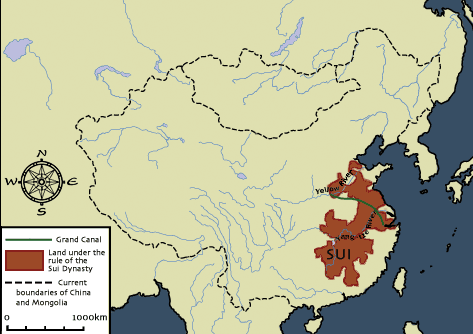
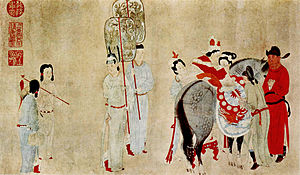

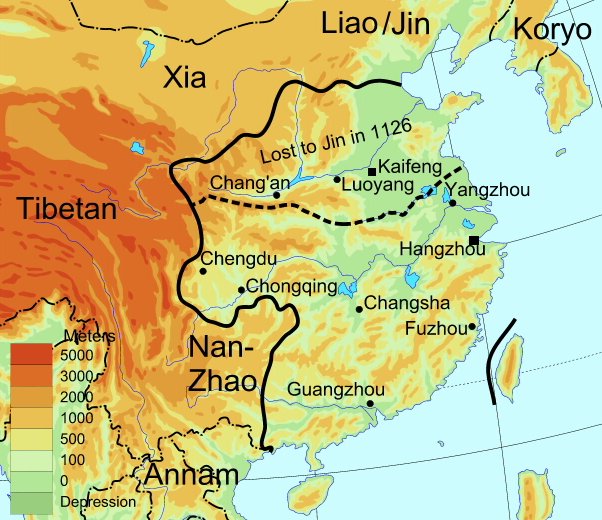
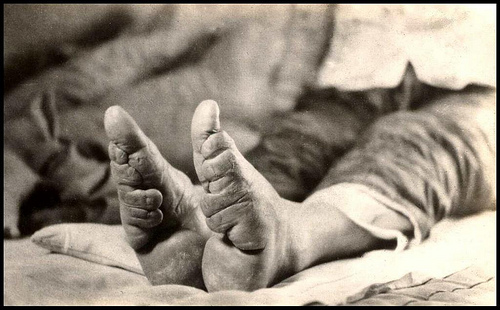

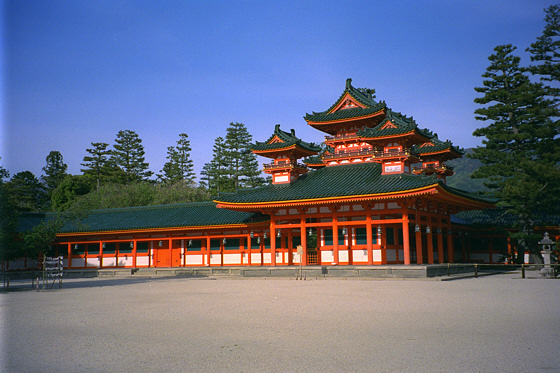



This comment has been removed by the author.
ReplyDelete